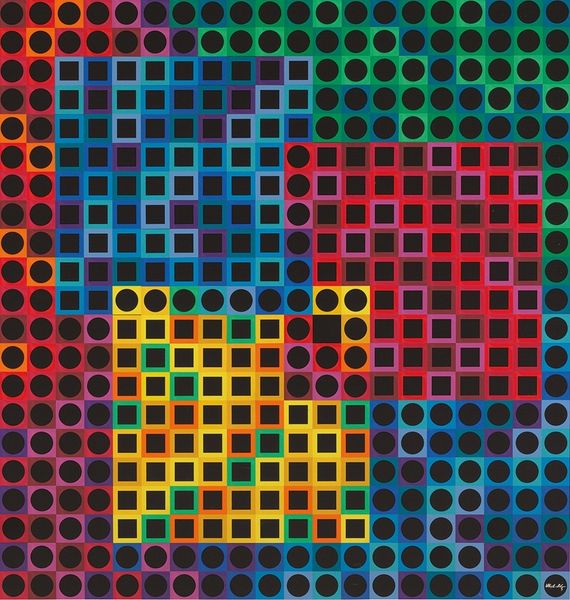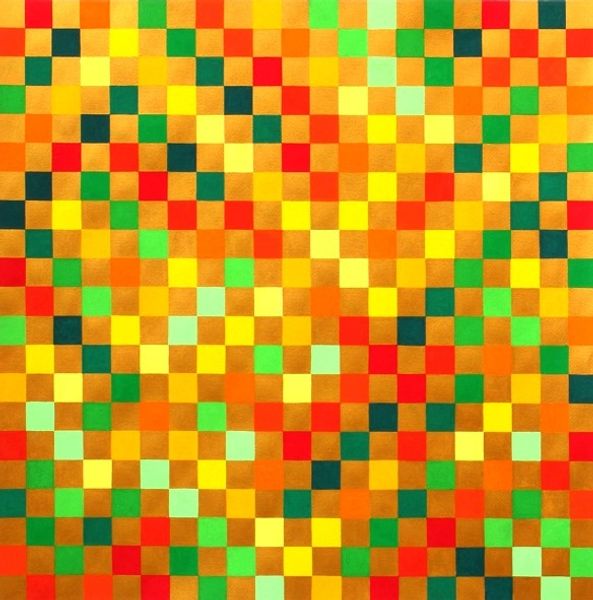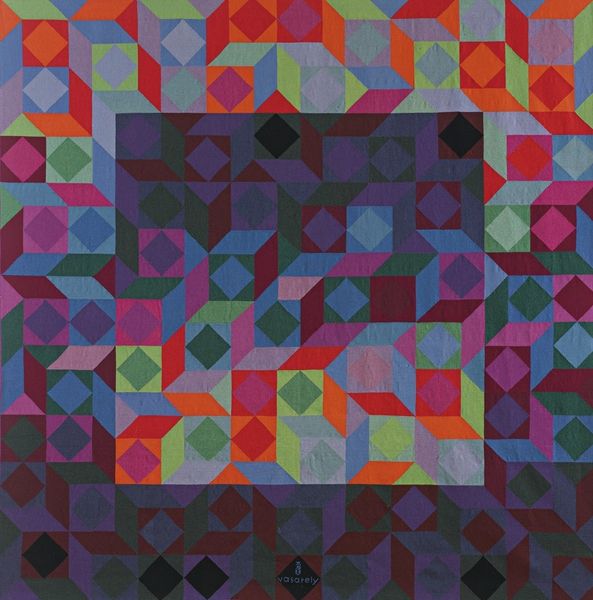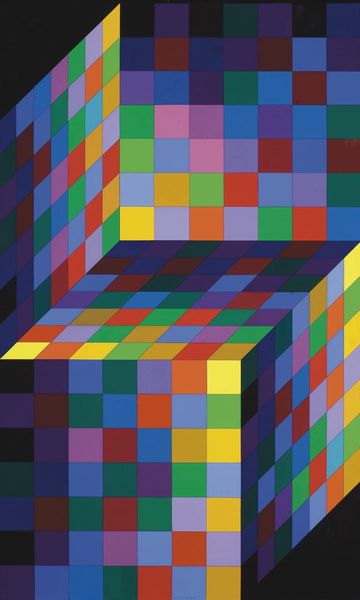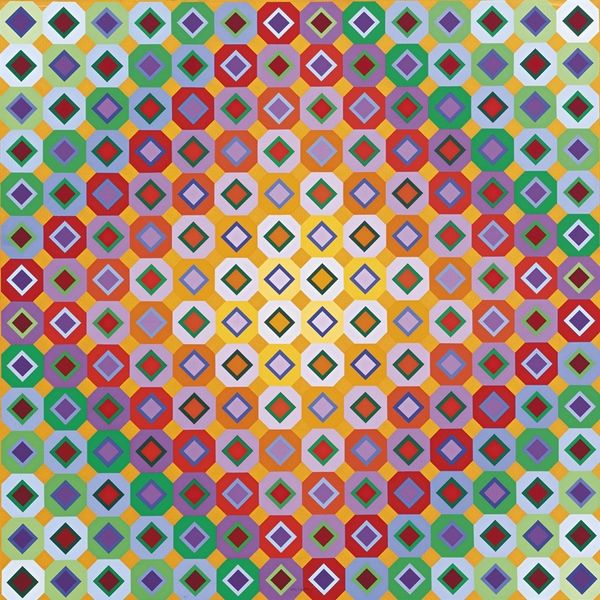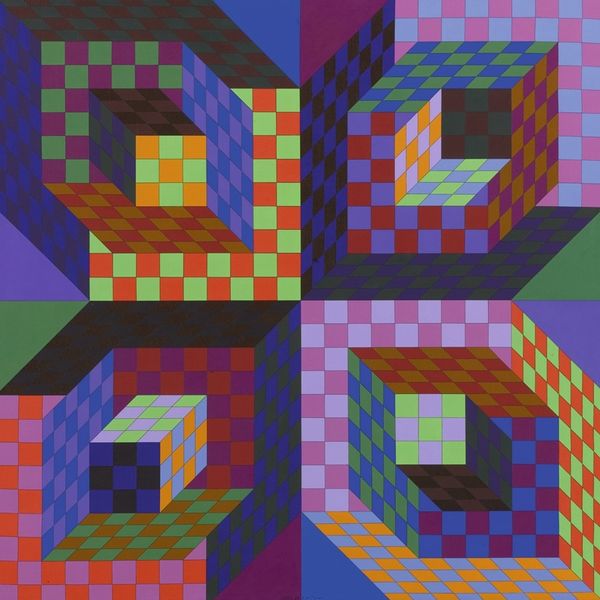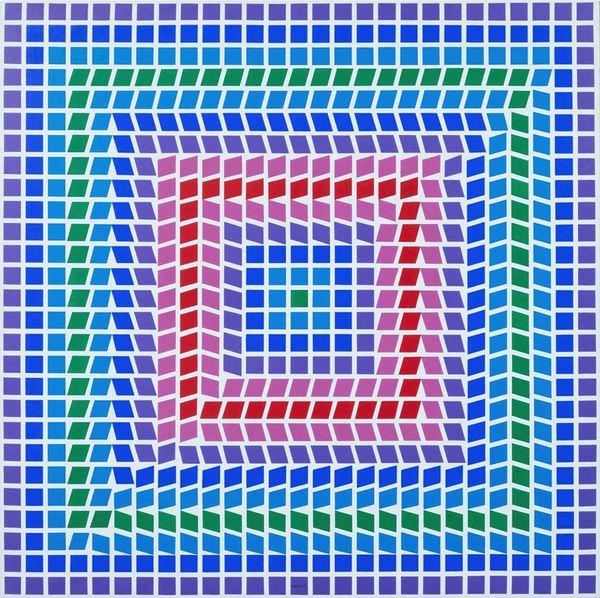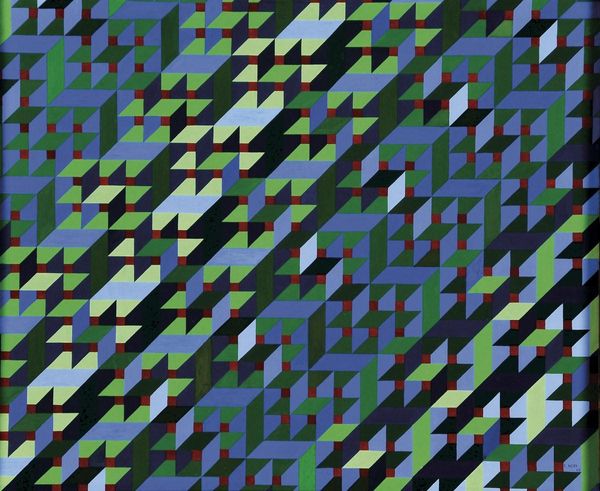
acrylic-paint
#
op-art
#
pattern
#
acrylic-paint
#
abstract
#
geometric pattern
#
abstract pattern
#
organic pattern
#
geometric
#
geometric-abstraction
#
repetition of pattern
#
vertical pattern
#
abstraction
#
pattern repetition
#
layered pattern
#
combined pattern
#
modernism
#
hard-edge-painting
#
repetitive pattern
Copyright: Modern Artists: Artvee
Curator: Let's turn our attention to "MAJUS," an acrylic painting created by Victor Vasarely in 1967. Editor: Wow, my eyes are immediately drawn in! It's a vibrant optical illusion. All those colors and shapes create this…almost dizzying effect. Curator: Exactly. Vasarely was a key figure in the Op Art movement, and here he manipulates geometric forms – squares and circles, specifically – to create a sense of movement and depth on a flat surface. We might consider his serial approach to the application of these geometric elements in a grid. What do you think that suggests in terms of production? Editor: Well, it suggests a systematized process. Almost mass-produced, although obviously, there’s a handcrafted element here in the application of acrylic. It raises interesting questions about the role of the artist's hand versus industrial modes. This was made not long after he published his Vasarely manifesto. Did this mark an evolution in his thinking? Curator: Yes, he envisioned art as accessible and reproducible. Look closely. You can see that the squares and circles aren't uniformly colored, and this color variation, and variation in placement within the overall field introduces dynamism. The squares serve almost as vessels, materially and conceptually holding each central dot within them. He worked with assistants too. How much did the conditions of artistic labor contribute to his artistic vision of that time? Editor: It seems to suggest an aesthetic system or even a visual language composed of simple, repeating units. It's about how those units interact and create an overall effect of disorientation that keeps the eye in constant motion. Curator: I agree. It’s hard-edged abstraction at its finest. You might wonder, too, about the influence of contemporary computer technology – think about punch cards and binary code. To me, the artist here also references pre-industrialized techniques such as knitting and tiling, to make a very broad art historical reference. The production becomes more human that way. Editor: That’s fascinating. Curator: I feel my focus has shifted, and with it, so too, my understanding. Editor: Indeed, by thinking through the making process and its inherent visual structures, we've gained a new appreciation for its design!
Comments
No comments
Be the first to comment and join the conversation on the ultimate creative platform.
